From rough sketch to final model, here's how Frontier designs the ships of Elite Dangerous
How to build a spaceship.
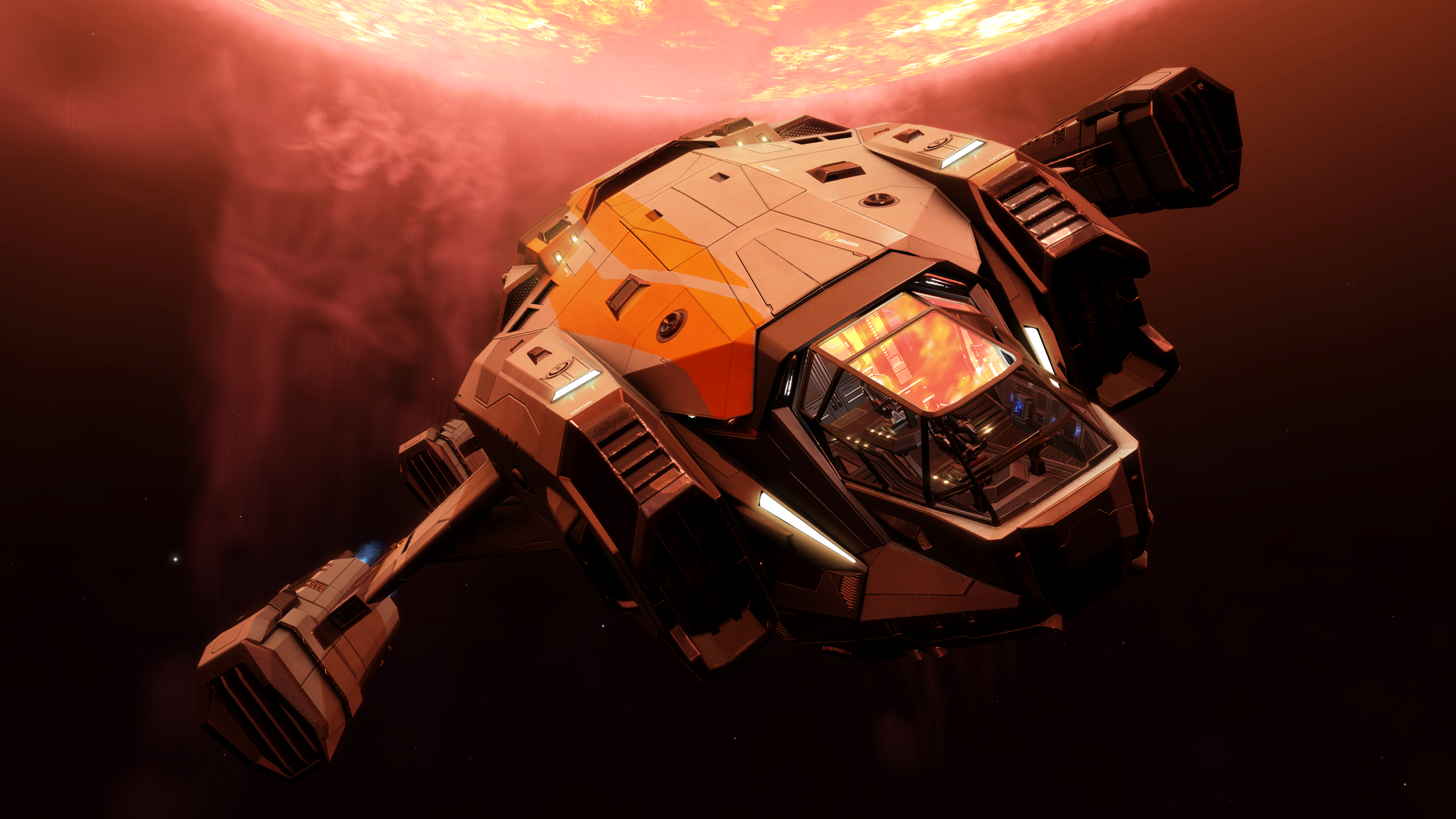
There are over thirty flyable ships in Elite, and every one has a distinct personality. These craft are the real stars of the game, and the thing every commander aspires to—whether they’re an explorer, trader, bounty hunter, or pirate. But how are they built? It’s something that has always intrigued me, how an idea makes it from someone’s mind to a spaceship that can be flown in-game. So I asked Frontier how it does it, focusing on the latest ship to be added to its growing space garage: the mighty Chieftain.
“The Thargoids have returned,” says Sandro Sammarco, lead designer of Elite Dangerous, referring to the mysterious aliens that have been tormenting pilots across the galaxy. “And their arrival has inspired the Alliance to build a war fleet, including a new ship called the Chieftain.” This combat-focused ship is manufactured by Lakon, most famous for its Type-9 freighter. It shares some design elements with that ship, but is a very different, and deadlier, beast. The idea behind the similarities is that the ship has been created quickly, on the fly, as a direct response to the looming Thargoid threat.
“The Empire, Federation, and Alliance are currently the three big superpowers in the game, and they control huge swathes of space. They don’t generally like each other very much, and have been close to war. And with the arrival of the Thargoids, the Alliance decided it had to protect itself and its people. So they commissioned Lakon to build them a range of new war-ready ships, including an experimental craft, the Chieftain, designed to battle Thargoids.”

The Chieftain was born from a story necessity; a way for the Alliance to fight back against the alien invaders
And so, although this isn’t the case with every ship in Elite, the Chieftain was born from a story necessity; a way for the Alliance to fight back against the alien invaders. “Players have been clamouring for Alliance ships for a long time,” says Sammarco. “So we really wanted to make that happen anyway, and the arrival of the Thargoids was the perfect opportunity. This is the right time to introduce more ships, especially if they’re built for combat.”
Knowing that the Chieftain is an alien hunter gives Frontier’s designers a clear starting point for the design. “When we create a ship, we like to give it a broad role. There is a crossover sometimes, because we have ships that are good at several things, but in this instance we wanted to lean into one role at the expense of others. The Chieftain is all about space superiority, about outmanoeuvring your opponent. It’s similar to the Vulture, one of our heavy fighters, in that respect. But that ship is a lot more expensive, so it’s nice to have a more affordable version of a ship with those capabilities.”
Frontier has something it calls the ship backbone; a chart plotting every ship in the game and the niche it fills. “It roughly illustrates things like value and effectiveness. At the bottom you have Sidewinders and Adders, and at the top there are monsters like the Anaconda. It’s only an approximation, but it gives us an idea of where a ship fits. In the Chieftain’s case, it sits somewhere in the upper-mid range. This is where ships are still fun to fly and maneuverable, but are starting to show some real teeth in combat.”
This is an important step when it comes to designing new ships: figuring out where it sits in the hierarchy, making sure it doesn’t fill a role another ship already does well, or be so overpowered that it throws the whole game into turmoil. “For balancing we think about the loadout. How many guns is the Chieftain going to have? It’s a warship, so it’ll have a stack of them, of course. But it doesn’t have to beat other ships in its class in terms of the size of its guns, because it’s going to be behind them, dodging their fire.”
The biggest gaming news, reviews and hardware deals
Keep up to date with the most important stories and the best deals, as picked by the PC Gamer team.
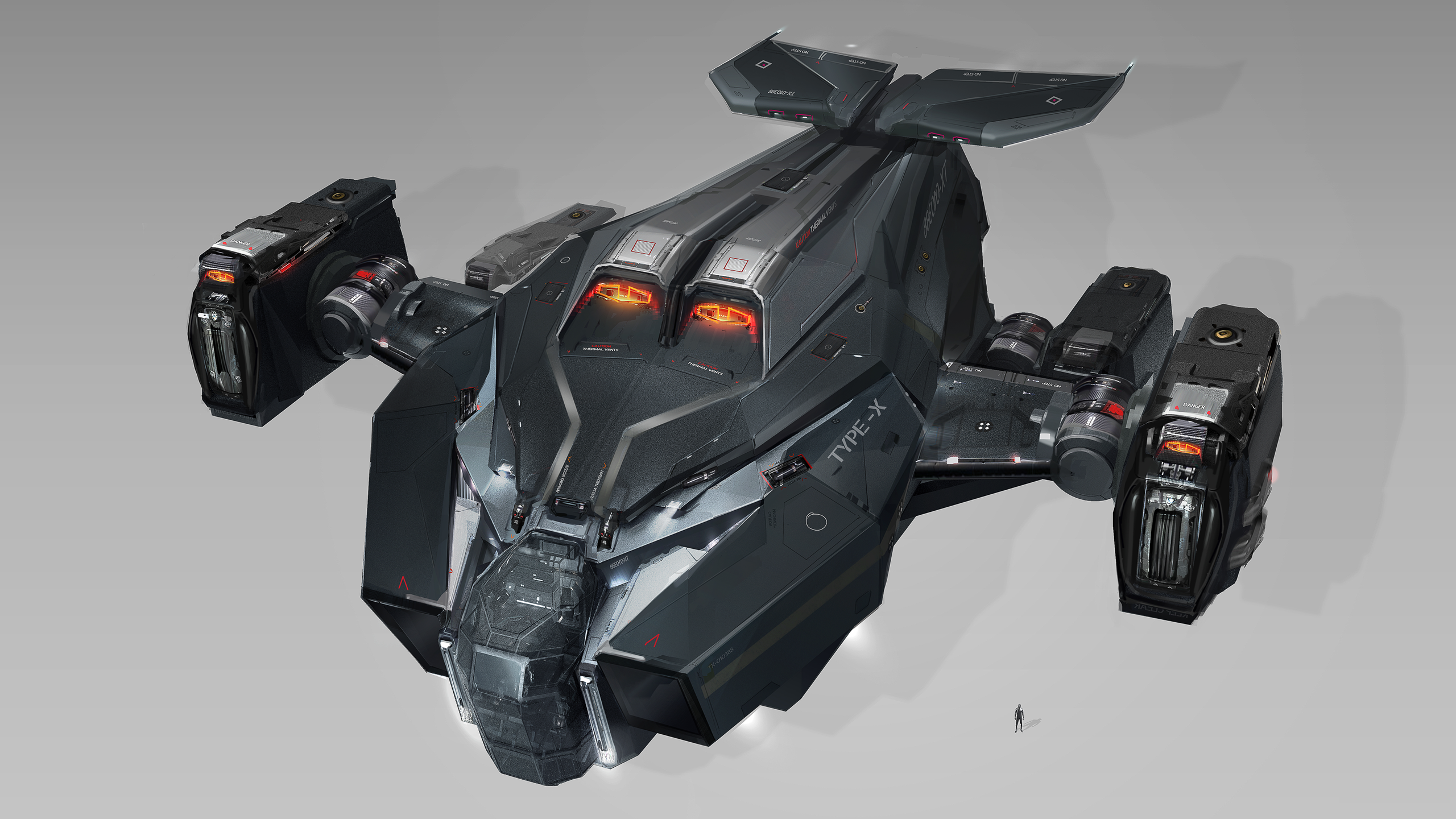
The backbone helps Frontier weigh new ships up against others in its class, to make sure it doesn’t massively outclass them. “With the Chieftain we looked at the baseline of other ships in its range and worked from there. This speeds the creation process up, especially compared to the early days of Elite Dangerous when there were no precedents, no backbone, and everything had to be created from scratch. We’re getting better at balancing new ships, and we’re happy with where the Chieftain is sitting on the chart.”
Creating a ship is a collaborative process. The 3D and concept artists will work closely with the designers and writers to make sure a new ship like the Chieftain works in all areas: from aesthetics, to function, to purpose. “Sometimes what’s happening in the game will drive us towards designing a particular kind of ship. The lore, the progression of the story. And in those cases it’s not just about where the ship fits on the backbone, but how it serves the narrative.”
When a ship slots neatly into the backbone, Frontier starts thinking about what makes the ship desirable. “I call it the shtick,” says Sammarco. “I can say it’s a combat ship, but there are other combat ships. What makes me, as a player, want this one? There are instant wins in the fact it’s an Alliance ship, and a Lakon ship, which gives it a distinctive styling and lore. A car manufacturer will ask itself, what do our customers want? What will sell this car? And it’s the same for us when it comes to designing ships for Elite.”
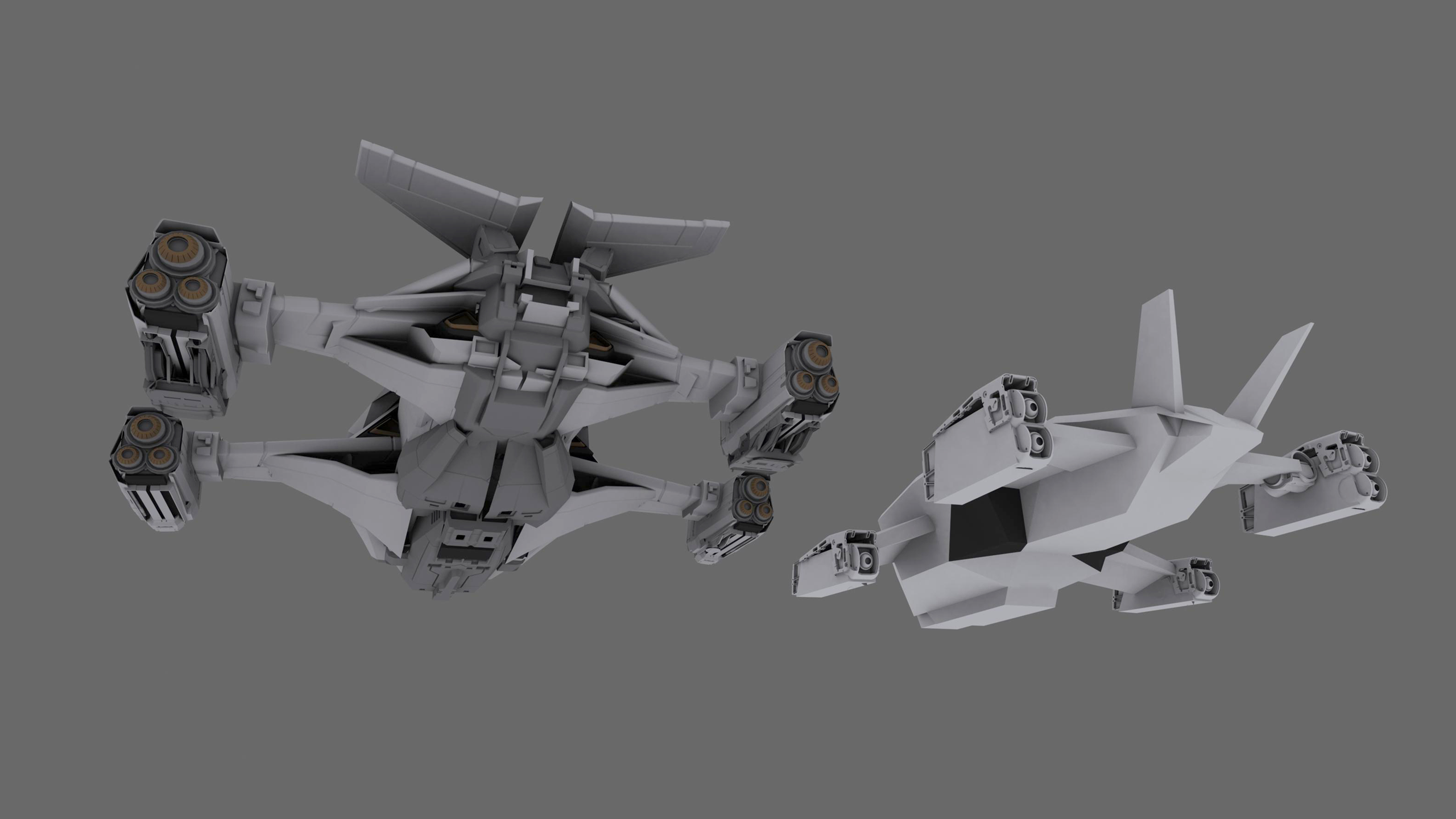
While the Chieftain is definitely a formidable, powerful vessel, it has its share of weaknesses too. It's only fair
One of the biggest selling points of the Chieftain, as well as looking cool, is the position of its hardpoints. “A ship like the Imperial Clipper has trouble in combat because the hardpoints are fixed to the wings and spread far apart. This makes hitting things that are close to you difficult. But with the Chieftain, there are two mounts on either side of the cockpit, very close to its centrepoint. They’re like a predator’s eyes looking forward. And the other guns are on two lines across its back, dead centre. It’s basically perfect for dogfighting.”
The Chieftain has the most concentrated set of centreline weapons in the game, which solves the problem of making it desirable to the playerbase—especially for pilots who love the thrill of combat. But it doesn’t have the biggest guns, so there’s a trade-off for that accuracy. It has less internal space than other ships in its class, which is a problem for traders. And its jump range is relatively limited. The designers have to make sure any new ship they introduce is balanced against the others, which is where that backbone graph proves invaluable. So while the Chieftain is definitely a formidable, powerful vessel, it has its share of weaknesses too. It’s only fair.
“Ships in Elite are more than the sum of their parts,” says Sammarco. “The actual experience of flying them is more than just the numbers that define their flight model. We’ll tweak its maneuverability, maybe take its shields down a bit. It looks tough, so we make sure it has reasonably strong armour and quite a lot of health. A nice, robust ship, but with weaker shields than similar craft. We build these trade-offs in, because it keeps things interesting.”
Before a ship is rolled off the production line and put into people's hands, it’s prototyped and extensively playtested. “It’s at this stage where we catch some of the most obvious flaws,” says Sammarco. “It could be too quick, too powerful, or spin out too easily. So we’ll tweak its performance based on that data.” After that, Frontier will usually test a new ship out in a closed beta, letting real players—the harshest critics—get their hands on it. “We had a great response to the Chieftain in the beta. Our players know more than us. They’re playing Elite Dangerous all the time, and we love tapping into that knowledge.”

Based on beta feedback, some changes were made to the maneuverability of the Chieftain. “People complained that it was too slidey and not particularly controllable. So we tightened its thrusters up, and it’s far more responsive now, going where you want it to go before it starts sliding all over the place.” Frontier puts great trust in its community, but they will tweak ships after launch if necessary, even if it angers some players. “For all the testing we do, and the community does, this is a complicated game with a lot of moving parts. So we’ll look at the data and make changes.”
This, Sammarco says, is a fact of life when it comes to developing an ever-expanding, constantly evolving game like Elite. “When I started in the industry, which was a long time ago, you’d beaver away for a year, maybe two, then it would go out. And barring any patches to make sure the game works, that was it. It was done, and you would move on. But Elite is a live game, and we’re still adding new content three years later. It’s brilliant and terrifying, and there’s a real inertia to anything we add. We have to make sure everything doesn’t topple over when introduce a new element to it.”
The Chieftain was finally released into Elite Dangerous on February 27 as part of the first chapter of the Beyond update, generating some heated debate in the game’s community. Some commanders are critical of its weak shields, while others are finding it a hardy fighter for venturing into Resource Extraction Sites—areas of space where wanted criminals can be found and their bounties claimed. You can’t please everyone, and almost every ship introduced into the game splits the community. But that’s the beauty of its diverse hangar of ships: there’s one for every kind of pilot.
Step by step
Art director Chris Gregory talks us through the design process
1. Blockout
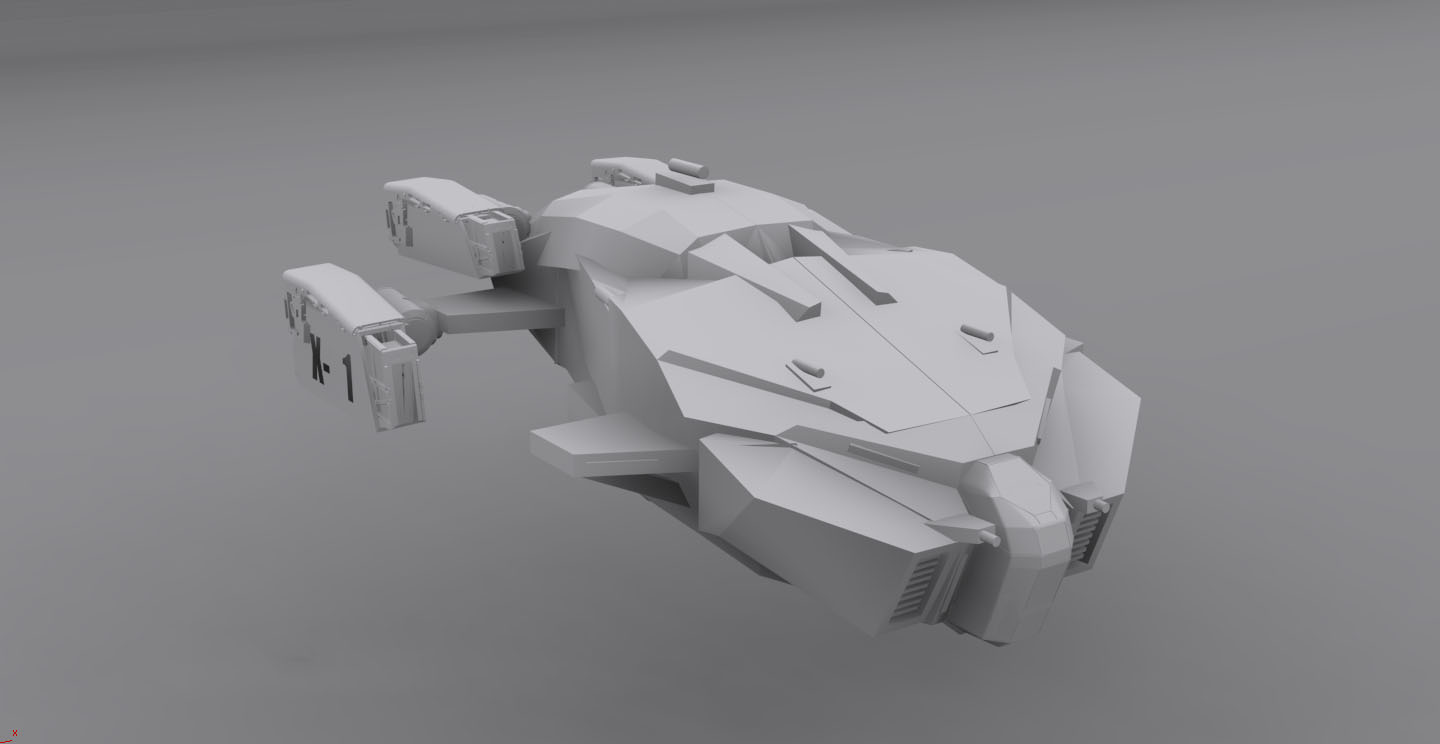
This is the first stage of creating a ship. The artists will draw rough ‘sketches’ called blockouts in 3D software, which help establish the basic shape of the craft being designed. “The nice thing about working in 3D is that we can check the design out from every angle,” says Gregory. “But we don’t texture them, because that can be a little misleading. You can seduced by the fact that it’s shiny. You need to get the basics right before the details.”
2. Ideation
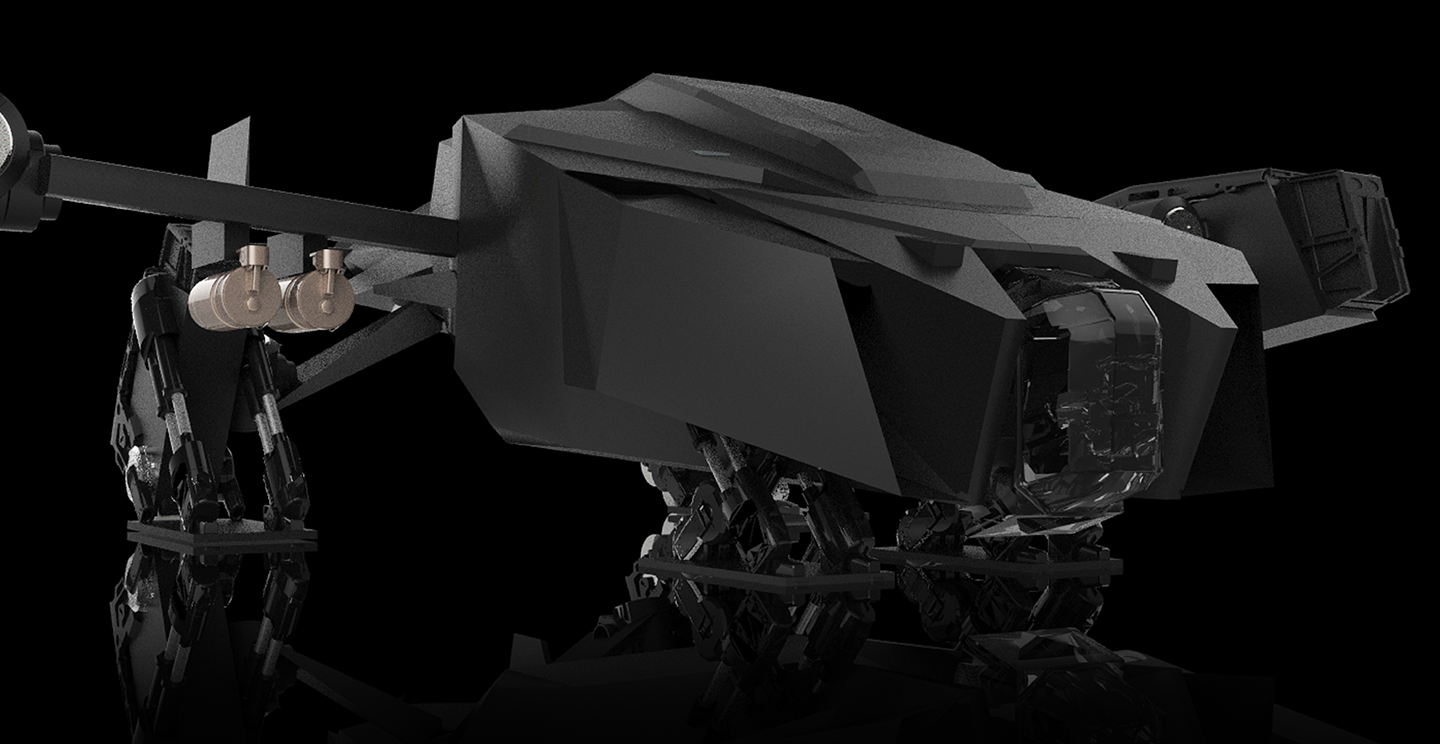
Once the basic shape has been settled on, the artists then focus on the finer details, such as how the landing gear will function and where the engines are placed. A ship can go through dozens of iterations at this phase until something clicks. “We also want the front of the ship, its face, to have a representative character that feels right. For the Chieftain, we wanted it to beefy and imposing, and we might think of something like a rhino.”
3. Paintover
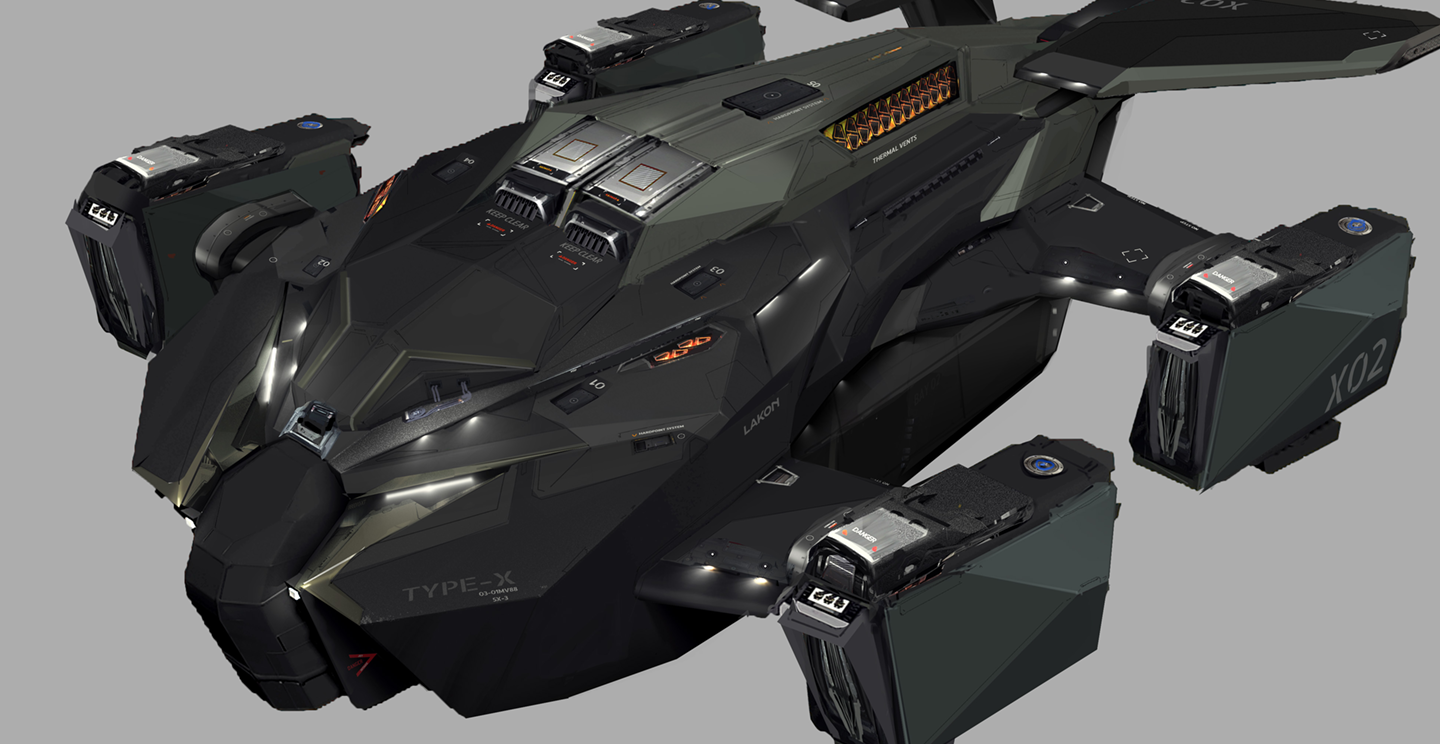
The 3D models are then sent over to the concept artists, who paint directly over the blockouts to get a sense of how the ship will look when it’s flying around in the game. They also add details like lights and heat vents to help them understand how the ship will operate. “Our artists are getting good with the 3D software, which means they can test things to do with linkages and pistons without having to send it back to us after the paintover.”
4. Kitbash
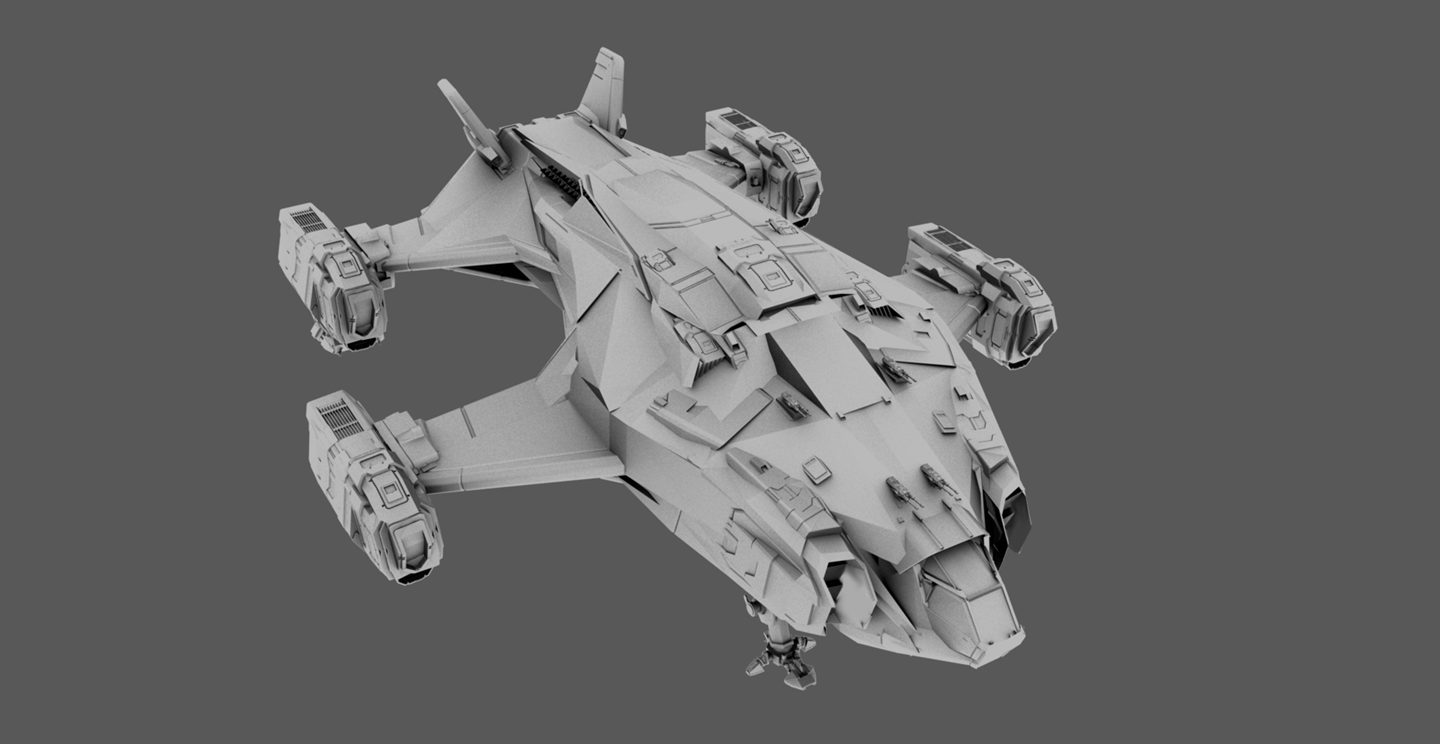
In sci-fi movies, particularly from the 1970s, effects studios like ILM would ‘kitbash’ their ships using model kits for planes, tanks, battleships. Frontier does something similar, sticking 3D parts to the blockouts to give them depth and fidelity. But it’s only a visualisation tool: none of these pre-made objects will make it into the game. “In the same way it allowed those guys to throw shapes together, it allows us to quickly establish the details of the ship.”
5. Cockpit
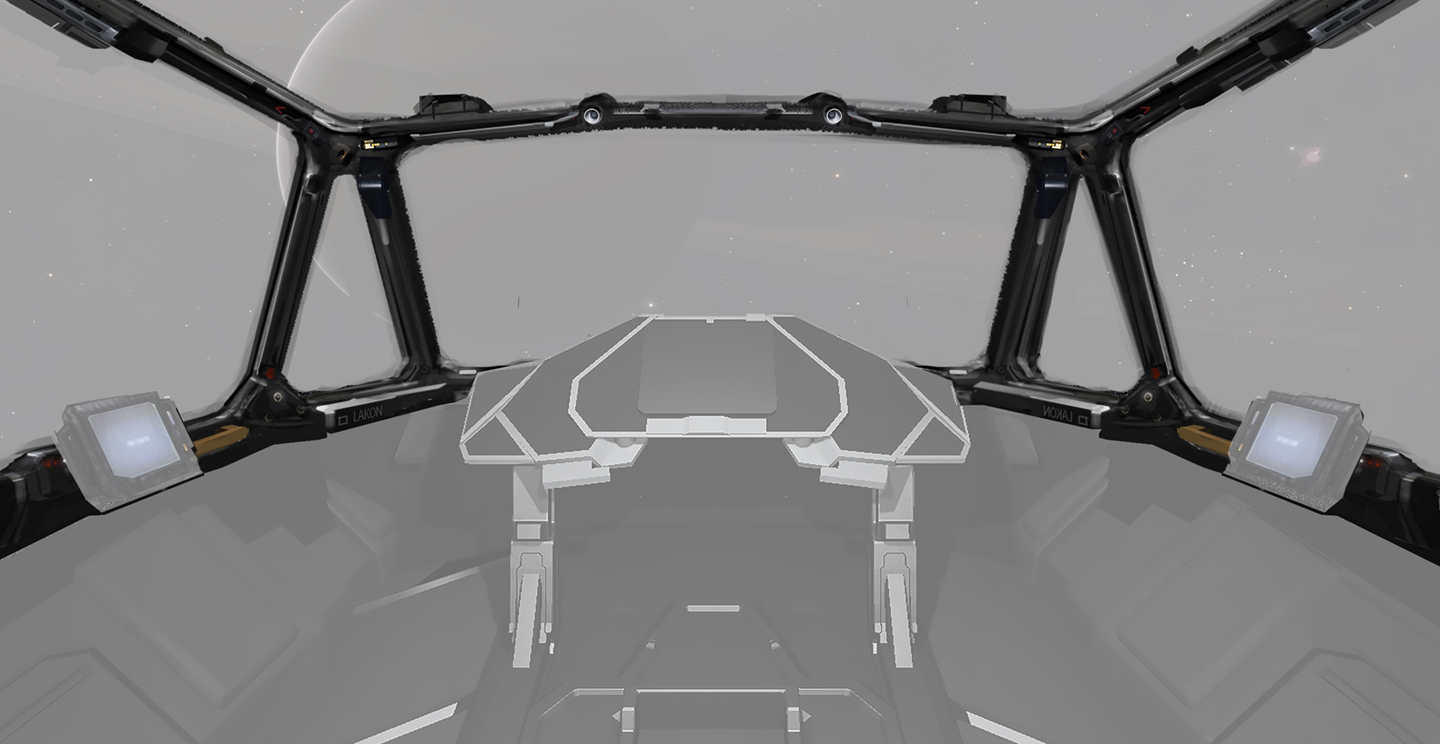
The cockpit can go through as many iterations than the ship itself. The shape of the canopy is carefully considered, because this what pilots see the most. It has to look good and function well. “When designing the cockpit we’re thinking about the seating position, working out the camera view, and making sure the struts aren’t too heavy. We put a rough model in the game, then the designers play it and give us feedback on how it functions.”
6. Final mesh
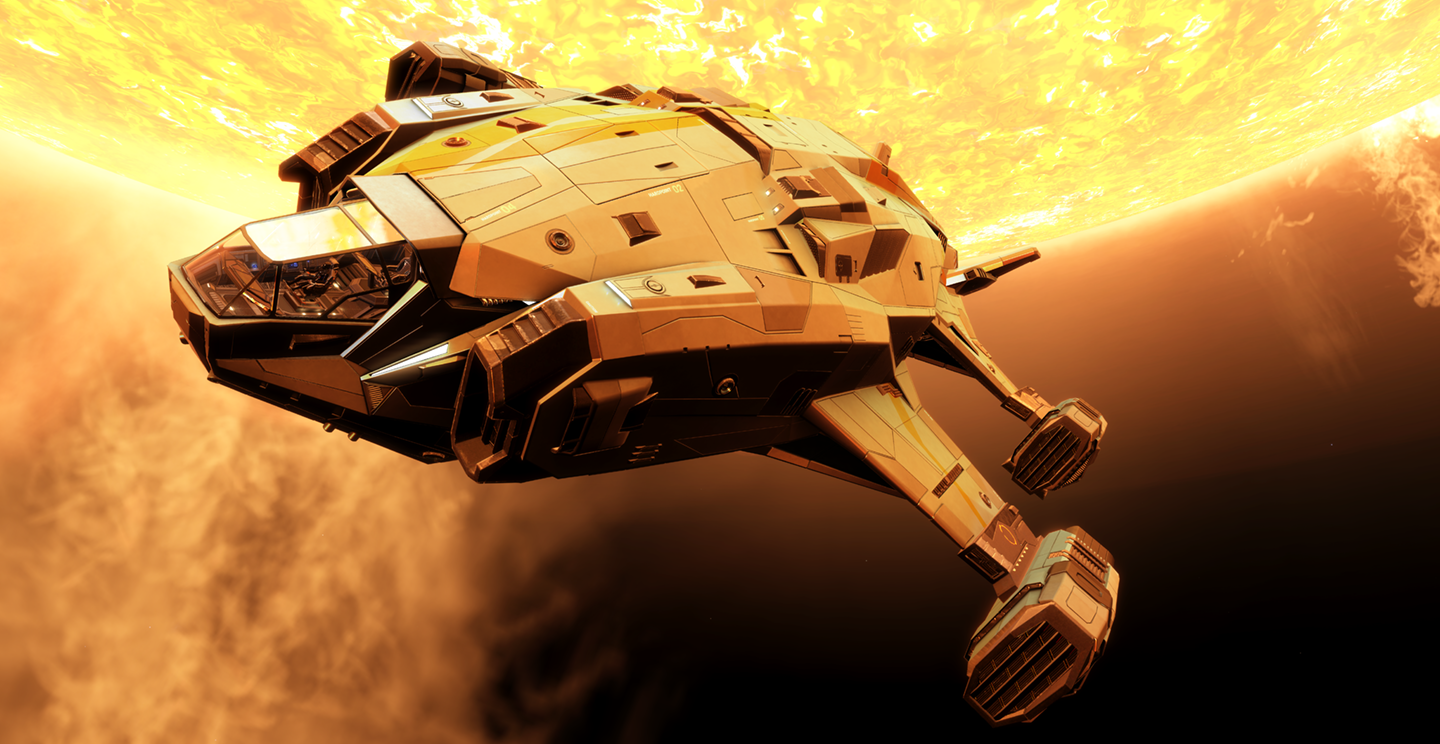
When the design is finished, the artists will create the final 3D model, which has to be highly precise. “Our models are really tidy and we never waste any polygons. The density of the mesh has to be consistent all over, and we’ll create multiple versions with different levels of detail, so when you see it close up it’ll be super detailed, but when it’s a dot in the distance it’s not. A lot of finesse and detail goes into the panel lines and how they connect up."
If it’s set in space, Andy will probably write about it. He loves sci-fi, adventure games, taking screenshots, Twin Peaks, weird sims, Alien: Isolation, and anything with a good story.


